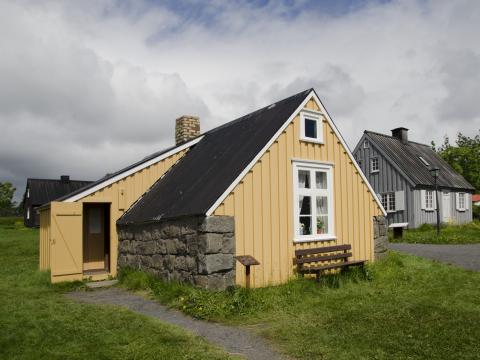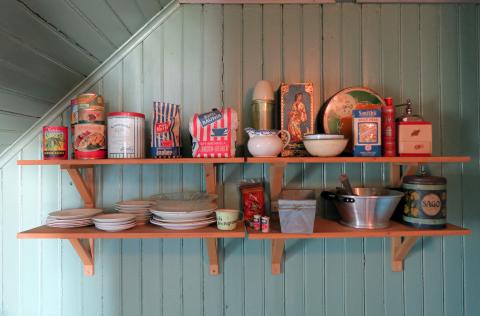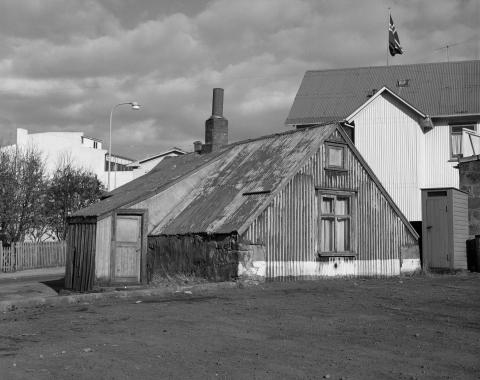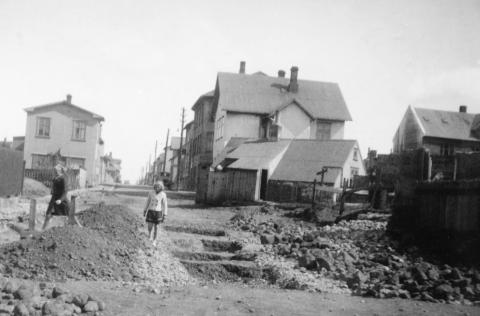
Hábær was originally located at the crossroads of Grettisgata and Klapparstígur, later to be Grettisgata 2B. It was built by a labourer named Jón Vigfússon in 1867, then demolished and rebuilt in 1887. Hábær, together with Nýlenda, are good examples of half-stone masonry houses at the museum. The architecture of these houses was particular to Reykjavík, often featuring stacked main walls and timber roofs. The era of half-stone masonry was short-lived, with most examples built during the last two decades of the 19th century, although some were constructed before. Hábær was relocated to the Árbær Open Air Museum in 1966.


The first house called Hábær was built by the labourer Jón Vigfússon in 1867. Another labourer Þórður Þórðarsson (1847-1911), bought the house in 1881. He was registered to live in the house four years later, along with his wife Ragnheiður Þorleifsdóttir (1850-1932) and labourer Ólöf Halldórsdóttir (1830-1929). Þórður and Ragnheiður also had a daughter, Ingileif. Þórður tore down the house in 1887 and rebuilt it. The walls and north gable were built like before, but the south gable was half-timbered. The roof was clinker-built from iron. The house had two rooms and a kitchen in the northern end. Þórður lived in the house with his family until he died in 1911 and his widow Ragnheiður was still there in 1929. The house was known as Þórðarbær or House of Þórður. Ragnheiður kept a garden with potatoes and swedes, and in the autumn, she worked at singeing lamb heads. The town's planning authority decided in 1937 that it would buy Hábær. The house wasn't torn down as planned but was rented out to poor people. In 1945, the house was in bad shape, decaying and run-down. In October that year, it was decided to tear down the house. And yet, the house still stood for another 20 years. In 1966, Hábær was moved to Árbær Open Air Museum. It is, along with the house Nýlenda, a representative of the half-stone houses of Reykjavík, and an example of how ordinary people lived around the turn of the 20th century.

